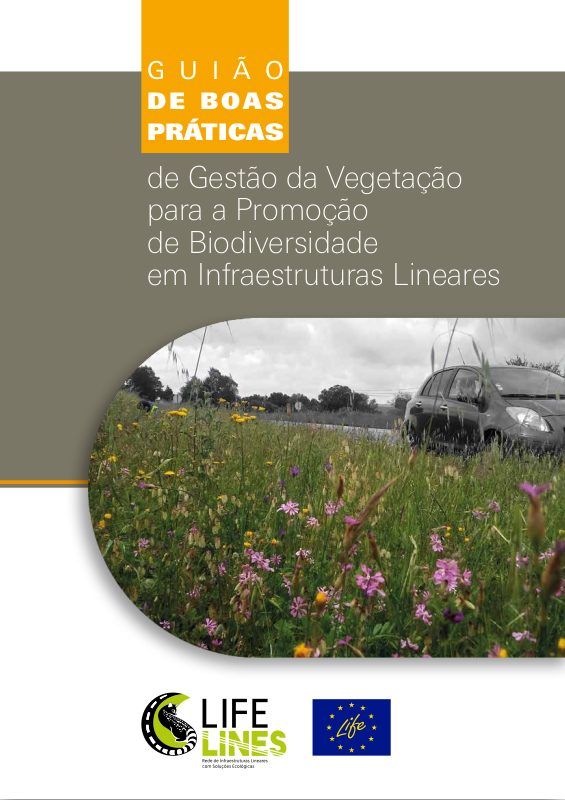Best Practice Guide to Manage Vegetation and Promote Biodiversity in Linear Infrastructures
Best Practice Guide to Monitor and Record Roadkill Data
2021-12-20LIFE LINES – ARCHITECTURE FOR WILDLIFE wins 1st Prize in the Environment & Ecology category at XV International Tourism Film Festival ART&TUR 2022
2022-11-07LIFE LINES project launches Best Practice Guide to disseminate procedures for biodiversity management, with emphasis on the plant diversity of marginal areas associated with linear infrastructures.
The Best Practice Guide to Manage Vegetation and Promote Biodiversity in Linear Infrastructures is now available. The recent increase in the extension of linear infrastructure, with the consequent fragmentation and loss of natural habitats, and the fact that these infrastructures, particularly roads, are a privileged way for the introduction and dissemination of invasive exotic flora justifies the relevance of this document. It is essential to take advantage of the potential of marginal green areas associated with linear infrastructure, for biodiversity conservation. For this, it is necessary to find solutions that reconcile the existence of linear infrastructures with nature conservation, especially in areas where natural or semi-natural landscapes are degraded and in decline due to the intensification of land use by human activities.
The present guide is based on the experience acquired in the framework of the LIFE LINES project (LIFE14 NAT/PT/001081) and intends to compile and disseminate the recommendable procedures for the management of biodiversity, particularly of plant diversity, in the marginal areas of linear infrastructures, primarily focusing on the national roads, decommissioned railways now used for recreation purposes (ecotrails) and power lines of very high voltage. The guide includes technical information for those in charge of the management of roads, trails and power lines (concession holders, municipalities), for environmental consultancy (Agência Portuguesa do Ambiente, Instituto de Conservação da Natureza e Florestas), and for landscape and agroforestry technicians, as well as for the general public.
Download here the Best Practice Guide to Manage Vegetation and Promote Biodiversity in Linear Infrastructures.

